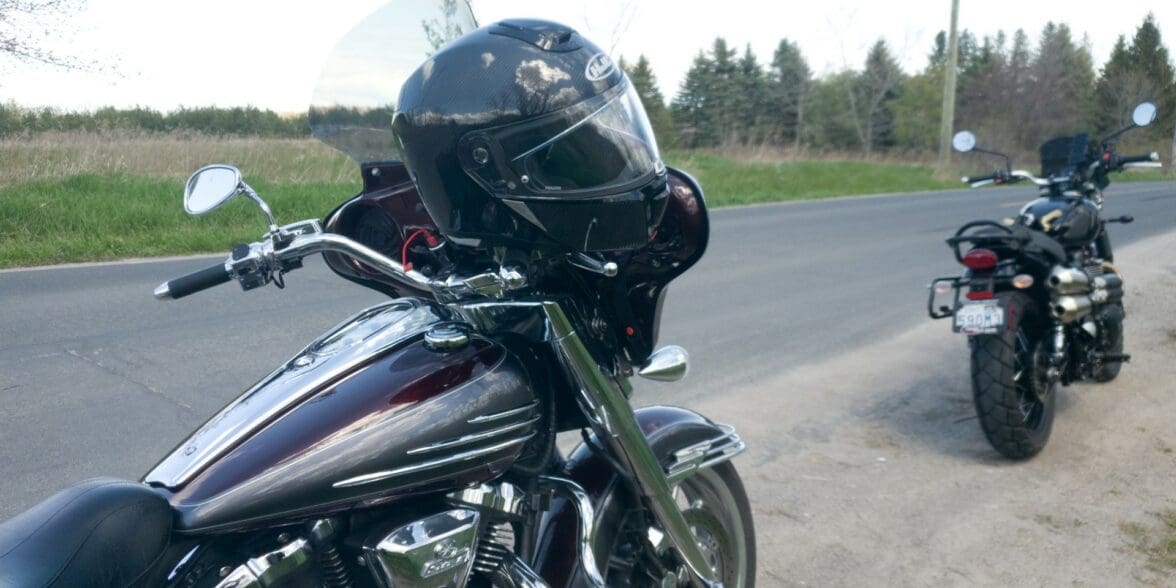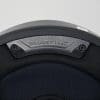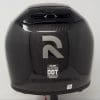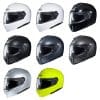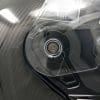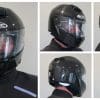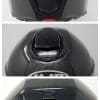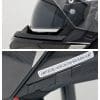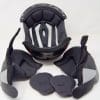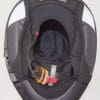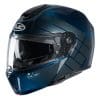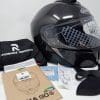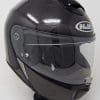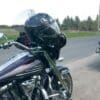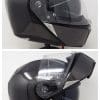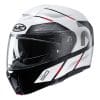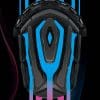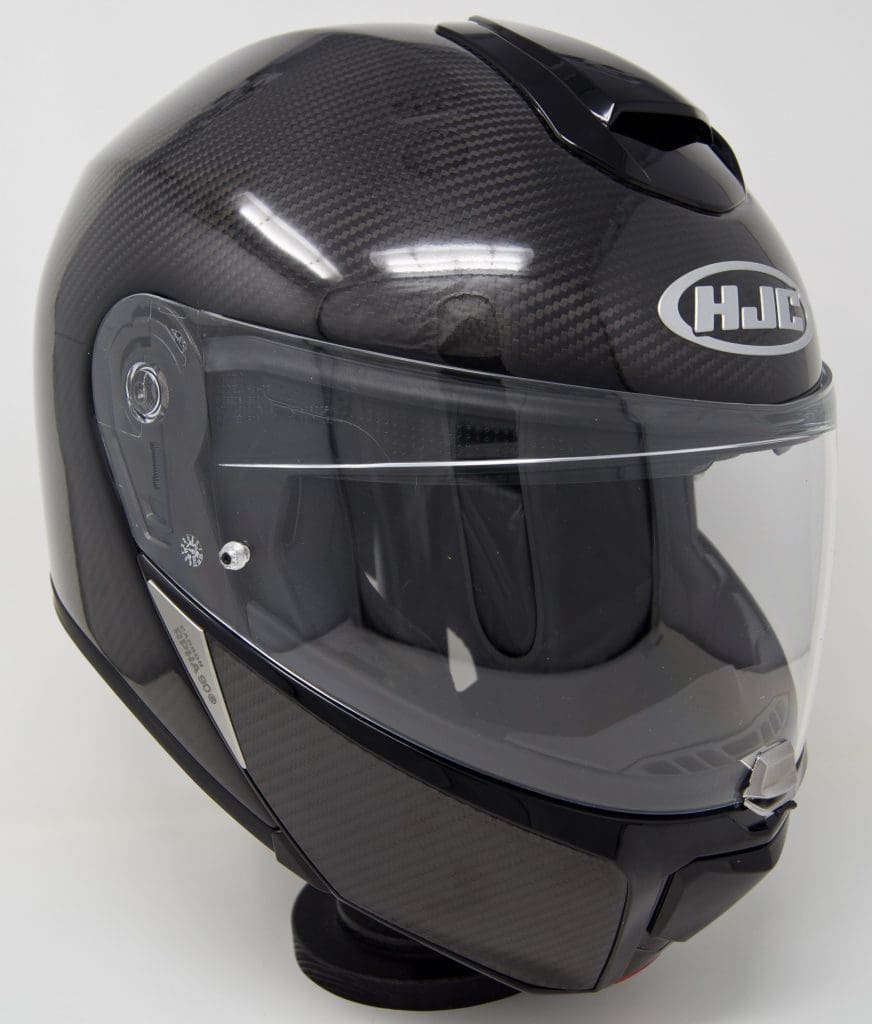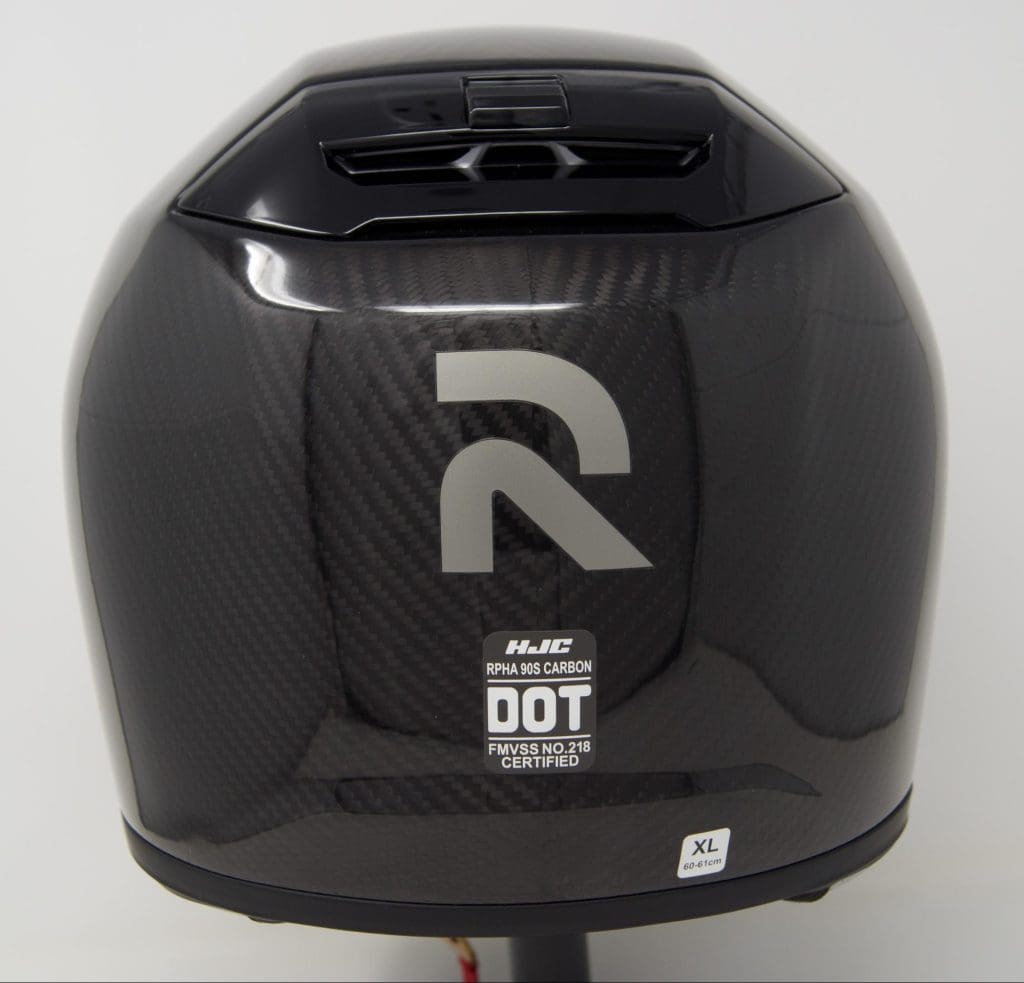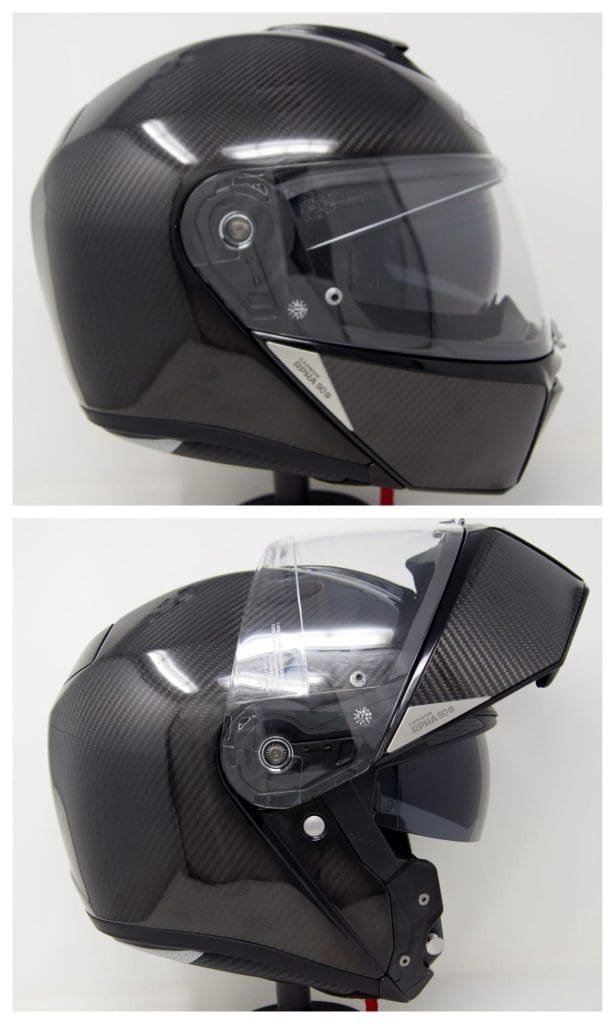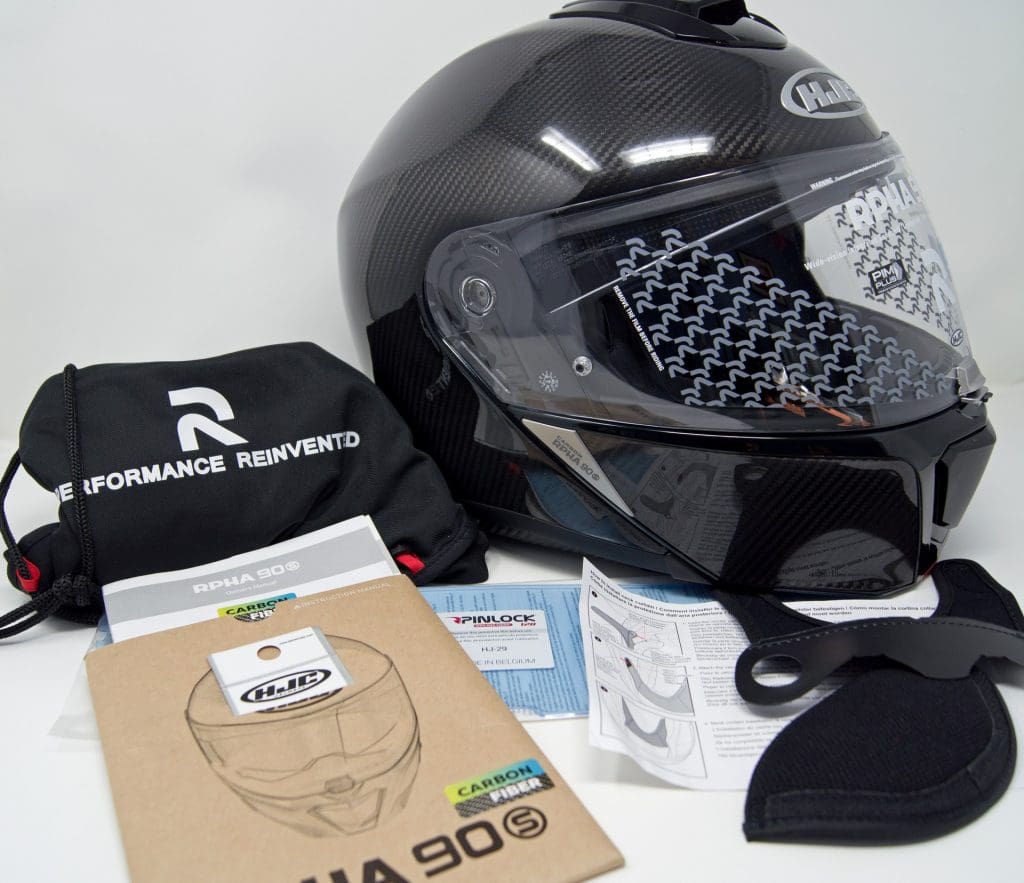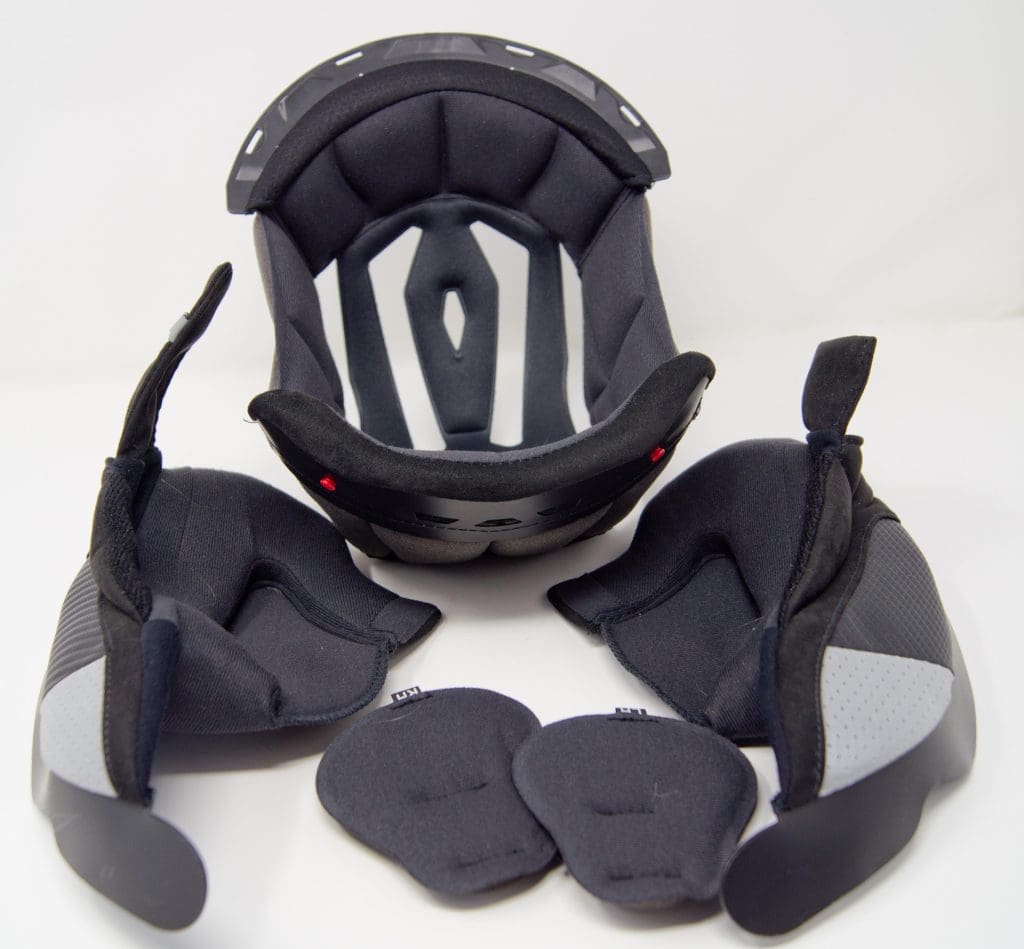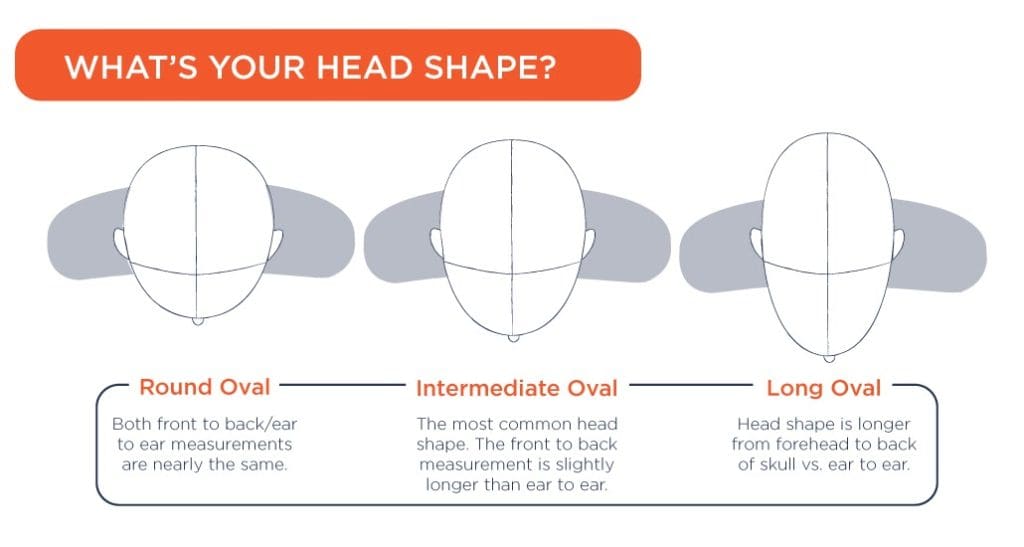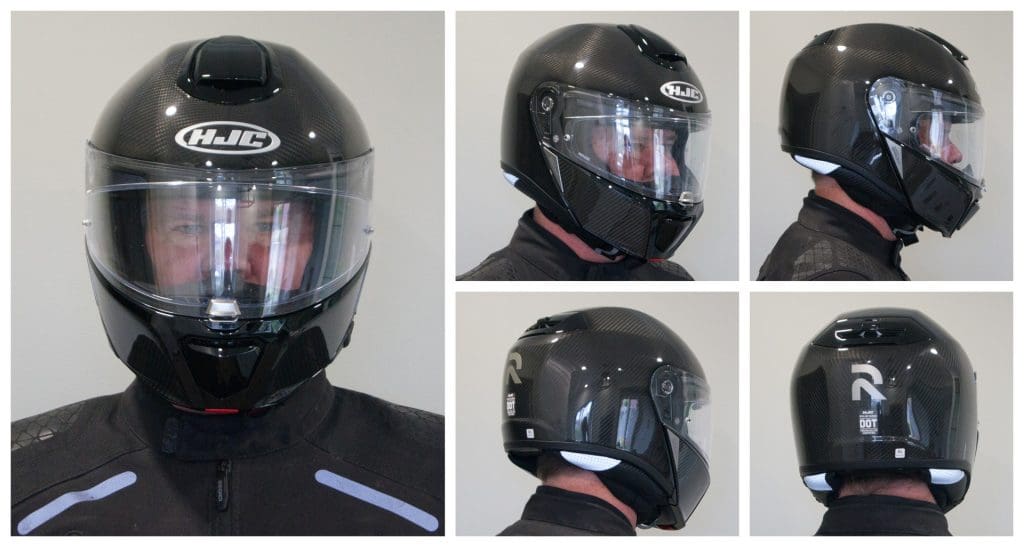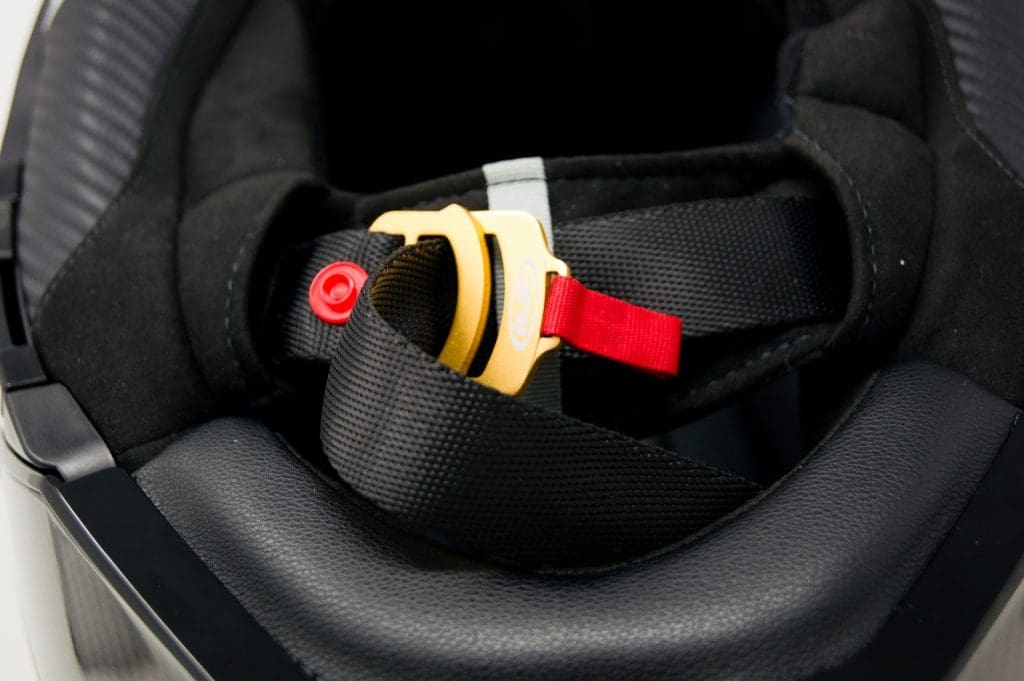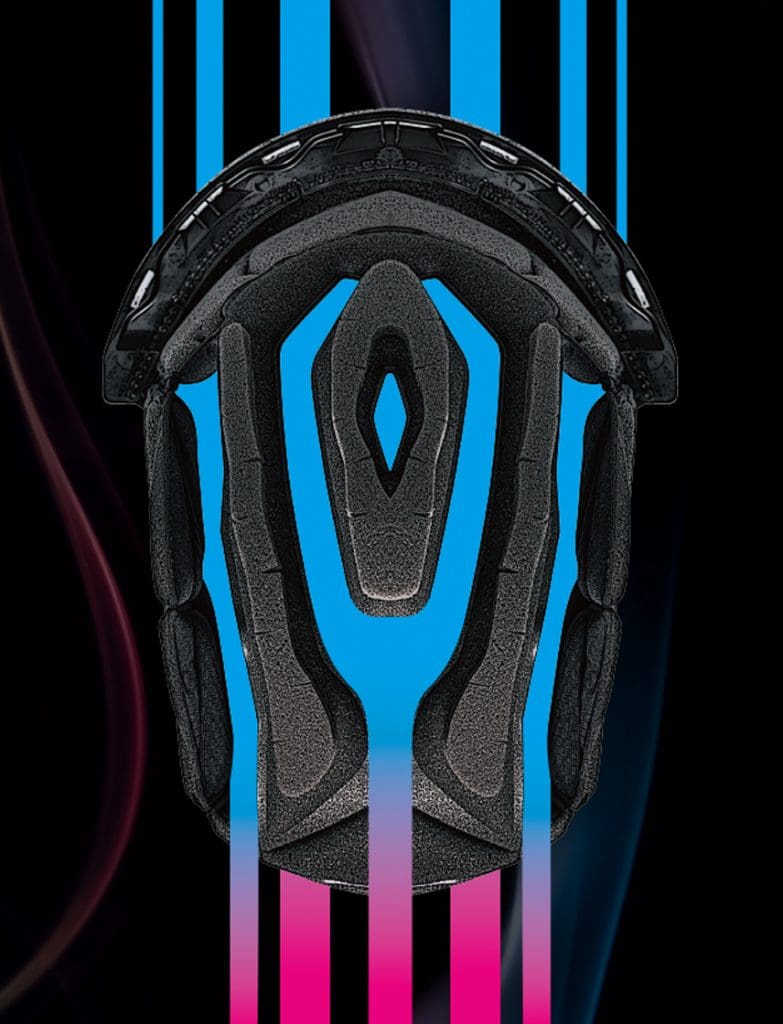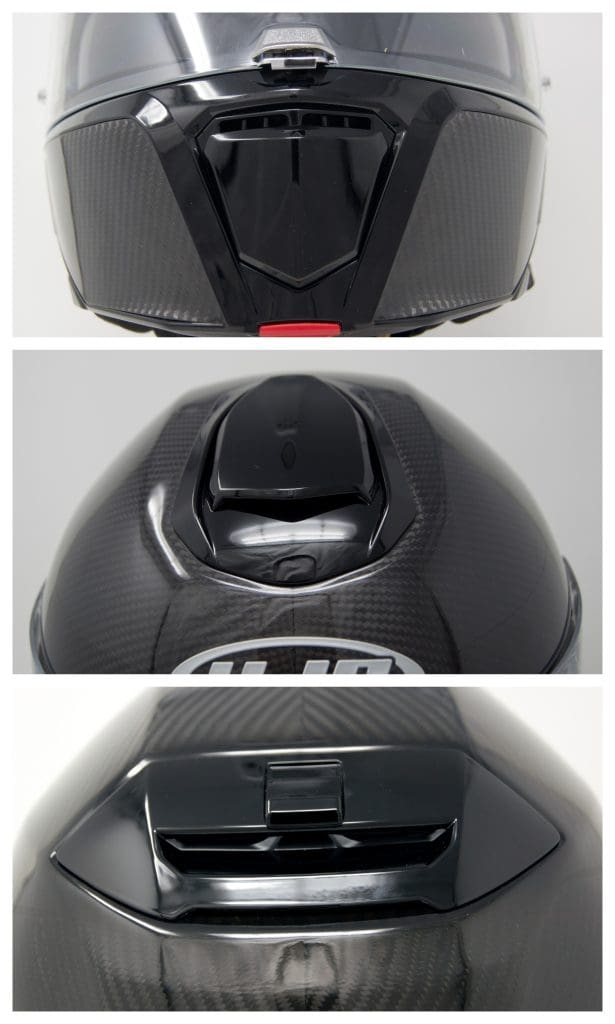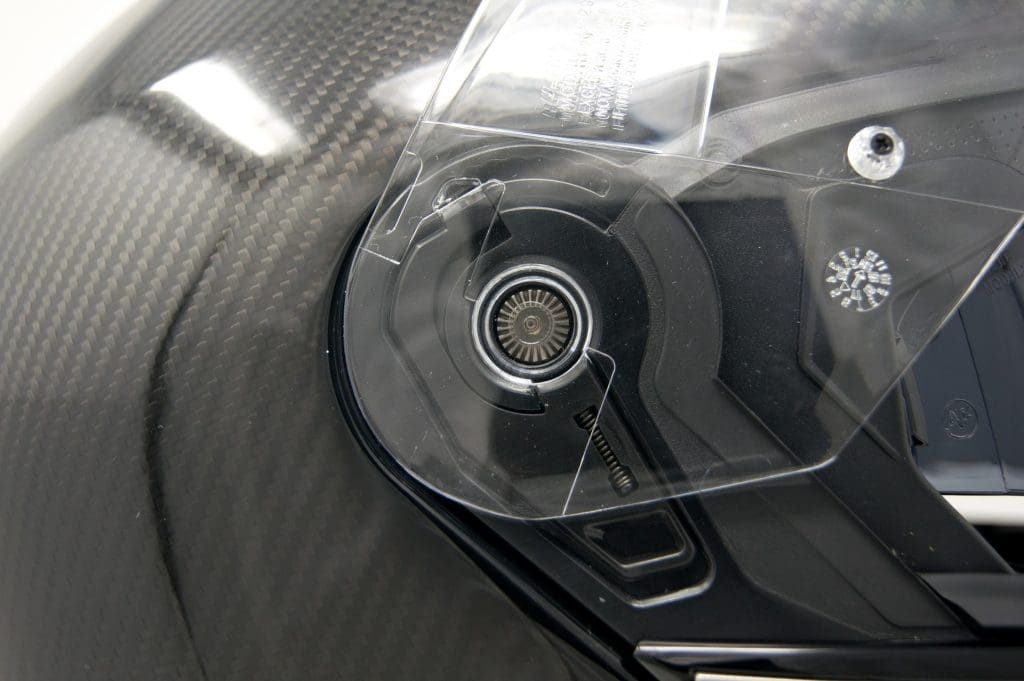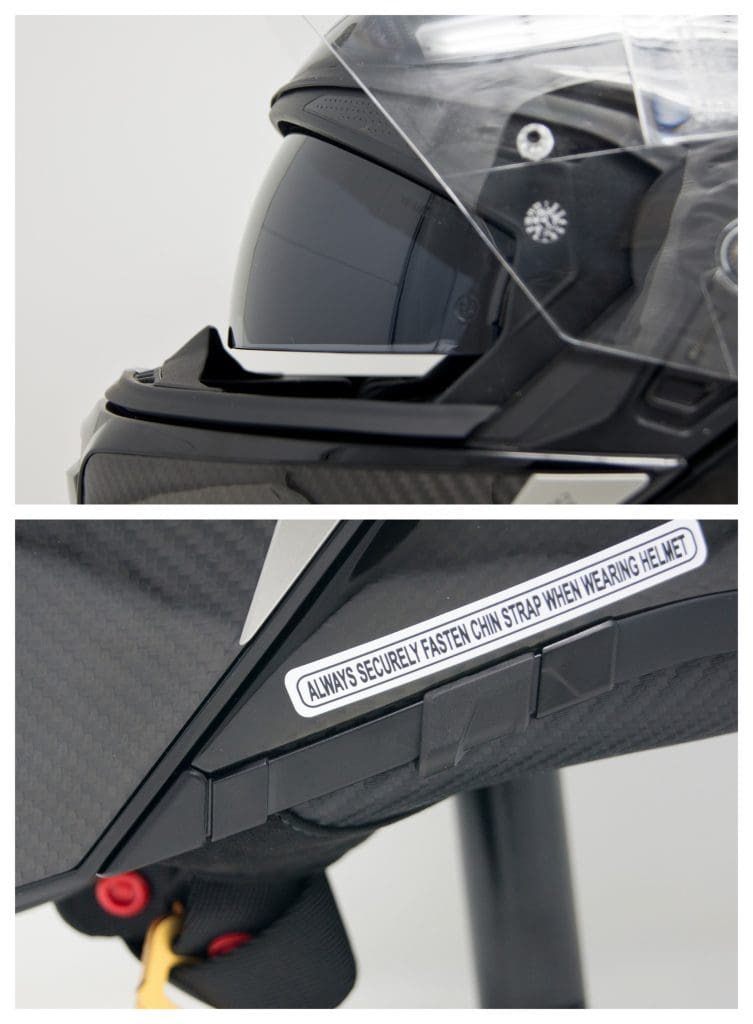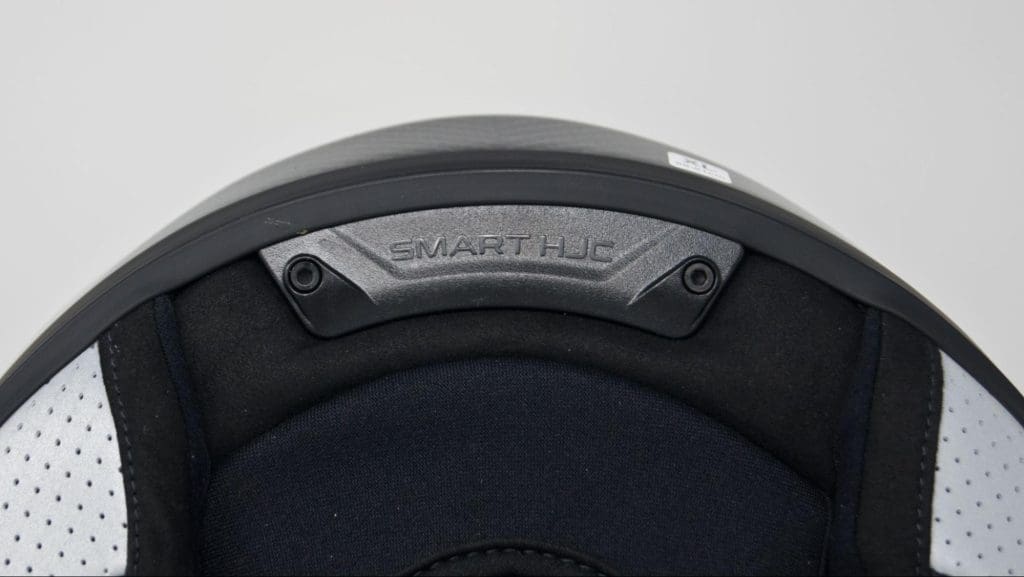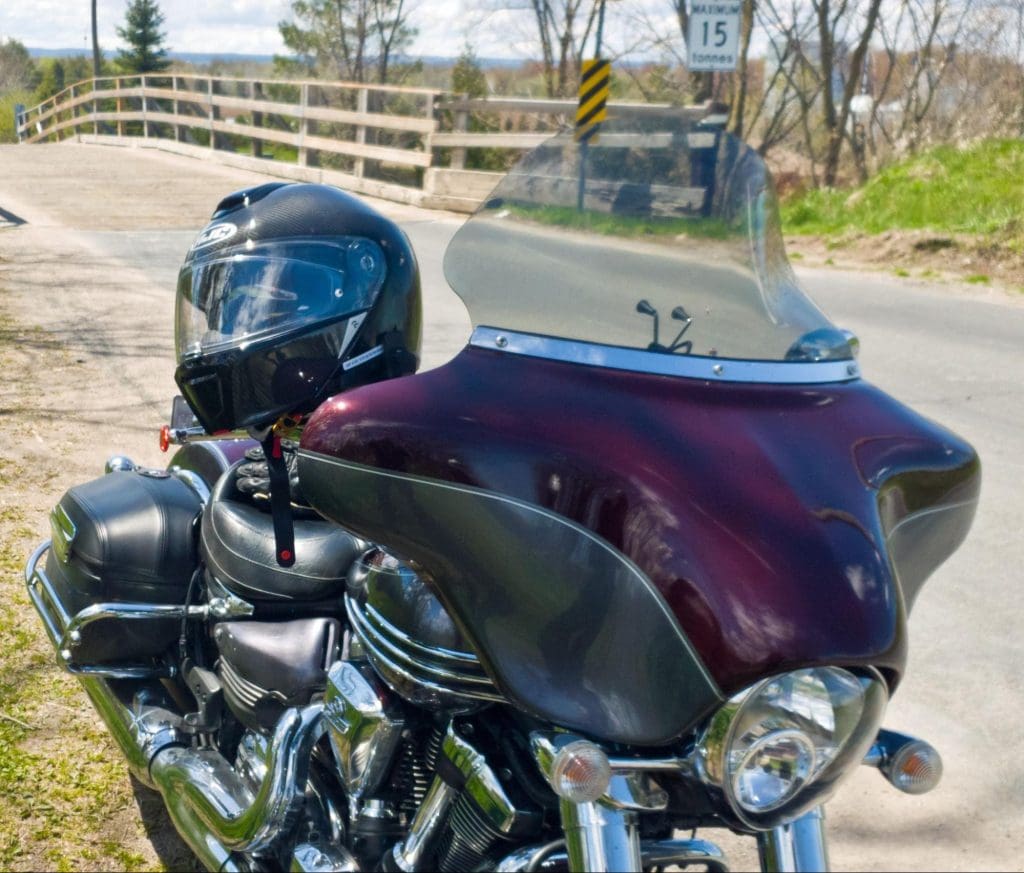Introduction
My first introduction to HJC helmets was not for use on a motorcycle. I purchased my first HJC helmet almost twenty years ago for snowmobiling. It was a modular helmet with dedicated features for snowmobiling, including additional wind protection and a double lens electric visor to eliminate frosting and fogging.
Since that time I have had three HJC helmets including the RHPA Max, which was the first modular helmet in the RPHA series of helmets and is a predecessor to the HJC RPHA 90S reviewed here. The main reason I kept coming back is the value for money that HJC provides.
So when the opportunity came up to try the new RPHA 90S Carbon, I jumped at it.
I hoped to use the helmet for some spring riding. Sadly, this spring would be a repeat of last spring, but this time would be wave three of Covid 19. In the province where I reside a Stay-at-Home order was implemented with the request for no non-essential travel. Although there is no ban on riding, I felt it was best to restrict my riding in support of all those fighting the virus.
At times restrictions were eased and I felt comfortable heading out for rides. Even with these changes, and with most motels and restaurants having restricted availability, most rides were limited to day trips. I have been lucky enough to ride around 1000 kilometers with the HJC RPHA 90S Carbon.
About HJC Helmets
HJC has long been known for very good helmets at a reasonable price. In 2012 HJC launched a new helmet brand called RPHA, which stands for Revolutionary Performance Helmet Advantage (pronounced “arfa”), it represented a line of premium helmets that feature Premium Integrated Matrix Plus (PIM+).
Features
From Revzilla and HJC (North America) Websites:
HJC RPHA 90S Carbon Helmet
The RPHA 90S Helmet from HJC boasts beautiful, clean styling and features that make any ride more enjoyable. To make a modular helmet that is both extremely strong and exceptionally lightweight, HJC utilized the same Advanced P.I.M. Plus shell technology as the RPHA 11 Pro, their top-of-the-line race helmet.
A 3D engineered, MultiCool, moisture-wicking, interior, specifically designed to mitigate road and wind noise, will keep you feeling refreshed both physically and mentally, even after days or weeks in the saddle. Both the chin bar and face shield are operated by one-touch, centrally located buttons that are easy to reach with whichever hand is most convenient at the time.
The RPHA 90S Carbon features a specialized neck roll designed to integrate seamlessly with the SMART HJC 10B or 20B Bluetooth communicators. Completing the package is an anti-fog and anti-scratch sun shield and stainless steel D-ring closure.
Features:
- Advanced P.I.M. Plus (Premium Integrated Matrix Plus) construction: carbon fiber and carbon-glass hybrid fabric for enhanced shock resistance
- Wider eye port provides better peripheral vision for riders
- Innovative, center, one-touch open/close locking system for chin bar and face shield is designed to be opened with either hand, even with gloves on
- MultiCool Interior advanced anti-bacteria fabric provides enhanced moisture-wicking and quicker drying function than the previous generation
- 3D engineered, ergonomic interior developed to reduce noise significantly
- RapidFire III shield replacement system: simple and secure shield ratchet system provides quick, tool-less removal and installation
- Optically-superior anti-scratch Pinlock face shield (HJ-29): anti-scratch coating providing 95% UV protection
- Pinlock insert included for the ultimate anti-fog system
- Integrated SunShield (HJ-V9): Anti-fog, anti-scratch, smoke-tinted SunShield deploys quickly and easily
- Double D-ring chin strap
- Eyeglass friendly EPS design
- Bluetooth-ready design accepts SMART HJC 10B or 20B Bluetooth communicators
- Meets or exceeds DOT standards
Warranty
HJC hereby extends a limited warranty to the purchaser of HJC helmets that the helmet is free of defects in materials and workmanship.
Coverage
This warranty is applicable to manufacturer’s defects only and the warranty period varies between HJC models. The RPHA Series warrants up to 5 years from the date of purchase or 7 years from the date of manufacture, while all other models warrant up to 3 years from the date of purchase or 5 years from the date of manufacture (whichever comes first).
This warranty does not apply to any problems that arise from the wearer’s misuse, negligence, modifications, accidents, etc. A change of fluorescent color is not subject to warranty as this is a typical characteristic of fluorescent color; it may fade or degrade depending on the user’s environment. All face shields warrant up to a year from the date of purchase. This warranty doesn’t apply to any problems that arise from user’s misuse, negligence, modifications, accidents, etc.
Disclaimer
In order to receive the warranty, please take your helmet, along with your receipt of purchase showing the date of purchase, with a brief memo describing the problem, your name, and phone number, and go to a dealer where you purchased the helmet from. All dealers will process warranties directly with their Wholesale Distributors.
Procedure
In order to receive the warranty, please take your helmet, along with your receipt of purchase showing the date of purchase, with a brief memo describing the problem, your name, and phone number, and go to a dealer where you purchased the helmet from.
First Impressions
The HJC RPHA 90S Carbon modular helmet is aimed at the touring and adventure touring crowd. For me, at first glance, I loved the carbon finish and sleek lines. The first look at the helmet screams high-quality materials, fit, and finish.
The carbon finish was flawless, and the fit and finish of the interior were excellent.
In the box, included:
- The RPHA 90S Carbon with attached visor
- Pinlock
- Chin Curtain
- Neck Curtain
- Storage Bag
- Manual
After many weeks of riding, these are my thoughts on the HJC RPHA 90S Carbon.
The Exterior
The RPHA 90S Carbon helmets are made using HJC’s Premium Integrated Matrix Plus (PIM+) construction for a lightweight aerodynamic shell. To my eye, the lines are very clean, and the Carbon finish looks fantastic.
With the XL/2XL shell and with the visor attached with Pinlock, my inexpensive kitchen scale showed a weight of 1633 grams. By comparison, my 6-year-old RPHA Max weighs 1734 grams.
The RPHA 90S and Carbon come in 3 shell sizes XS/S, M/L and XL/2XL.
The shell has two air intake ports, one on the chin, the other on the top. There is a single exhaust port at the rear. More on ventilation later.
The modular chin bar moves smoothly with a solid connection in both the fully open and fully closed positions. To open the chin bar, pull the red lever forward and push the chin bar upward until it clicks into the fully open position. To close, pull the chin bar down until it clicks into the fully closed position.
The only graphics on this RPHA 90S Carbon are the HJC logo on the front above the visor and the subtle ‘R’ RPHA logo on the back. Both feel like they were applied after the clearcoat and could easily be removed. There are also metallic triangles on the upper corner of the chin bar with RPHA branding and model on either side.
The RPHA 90S meets or exceeds DOT FMVSS 218 approval. It also meets or exceeds ECE 22.05 approval.
Paint & Color Selection
The RPHA 90S Carbon comes in three colors: the RPHA 90S eight solid colors and three graphic colors. The following colors are from the HJC’s American and European websites.

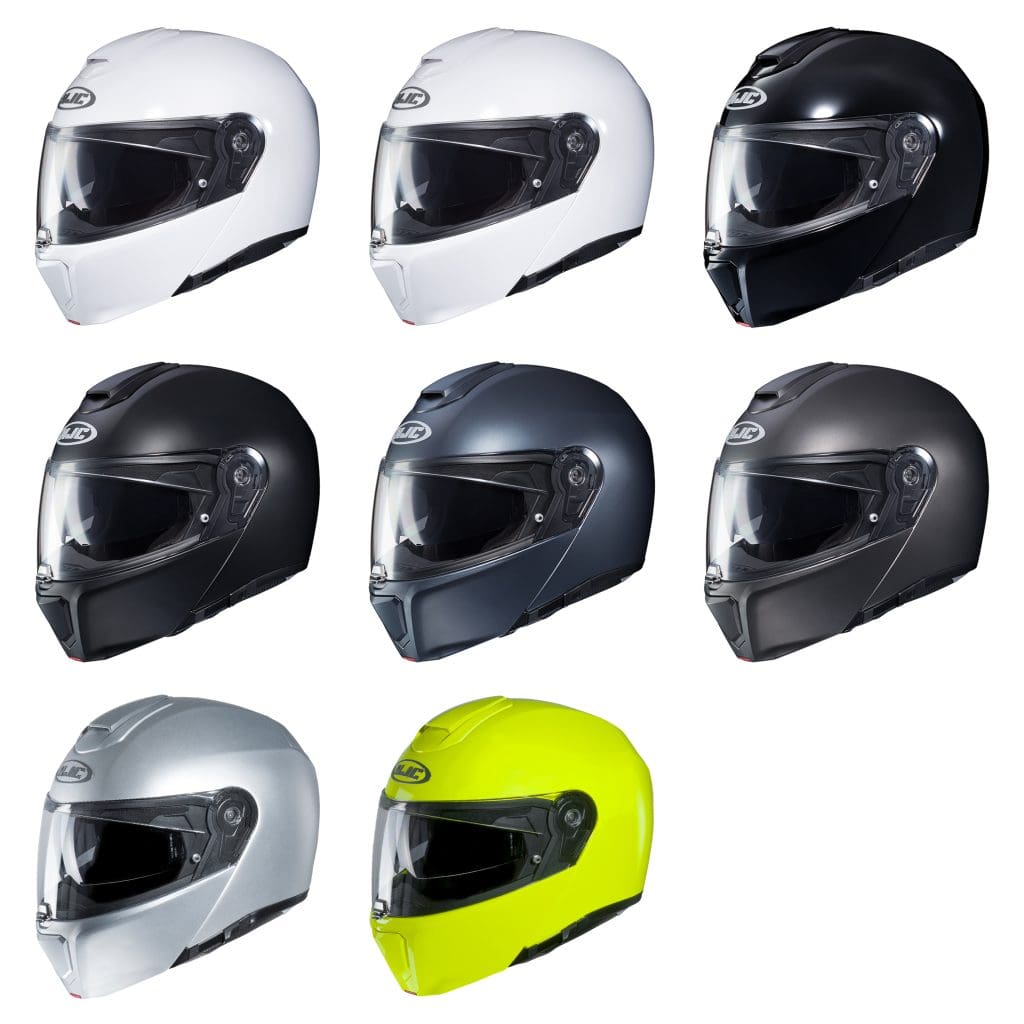
RPHA 90S Bekavo Graphics – Semi-Flat Black, Semi-Flat White, Fluorescent Green
I have inspected the finish after removing bugs from several rides, and the fit and finish look as good as new. The clear gloss finish over the carbon is very easy to keep clean.
The Interior
The interior of the helmet is made from various soft grey and black materials. It uses HJC’s MultiCool Interior with Polygiene, which is antibacterial and provides enhanced moisture wicking and quicker drying function than the previous generation. It also uses a 3D-engineered, ergonomic interior developed to reduce noise.
The interior is completely removable and easy to deconstruct and reassemble.
The interior is made up of the following parts:
- Cheek pads / side-curtain – these snap into place with 3 snaps and a plastic sleeve.
- Headliner – is held in place with 2 snaps at the back and 4 clips at the brow.
- Earpads – these cover the indentations in the EPS if no speakers are installed and are held in place with small clips.
- Neck curtain – this comes packaged separately and can be added to seal the back of your neck. It is secured within the rear snaps of the headliner as well as velcro to the side curtain.
- Chin curtain – this comes packaged separately and velcros to the lower chin bar.
- Breath Deflector – this is located at the top of the chin bar and is removable.
Everything appears to be well made. If you take care of the helmet I wouldn’t foresee any issues with durability. All of the above pieces are replaceable.
Various thicknesses of cheek and liner pads are available for a more custom fit depending on helmet size for under $40 each.
Overall Build Quality, Fit & Feel
HJC has a reputation for quality products at a reasonable price. The RPHA series offers that same value in the premium segment. The RPHA 90S Carbon did not disappoint. The quality, fit and finish, and materials used all appear to be very good.
Sizing
The helmet comes in 6 sizes across 3 shell sizes.
| Size | Head (CM) | Cheek (MM) | Liner (MM) |
| XS | 54 – 55 | 35 | 12 |
| SM | 55 – 56 | 30 | 9 |
| MD | 57 – 58 | 30 | 12 |
| LG | 58 – 59 | 25 | 9 |
| XL | 60 – 61 | 25 | 15 |
| 2XL | 62 – 63 | 20 | 9 |
Based on the sizing chart, my 61 cm head was a size XL. I found the XL to fit a bit tight.
As part of the WBW’s Motorcycle Helmet Buyers Guide, there is a section on Finding the Right Fit.
Comfort
The HJC RPHA 90S Carbon comes in an intermediate oval head shape. This happens to be the shape that I find most comfortable. I did find on longer rides that I was getting pressure on my forehead. Since the XL and 2XL share a common shell, I ordered a 2XL headliner (not cheek pads) to see if that alleviates the problem. After several rides with the helmet for 2+ hours, I am confident in saying that this change solved my problem.
I did most of my riding behind the windshield of my Stratoliner as well as on my ZRX. From riding around town to 120 km/h runs down the freeway, the helmet was extremely stable. I think this can be attributed to HJC’s use of their wind tunnels.
Although I don’t require glasses while riding, I did try a pair of glasses to gauge comfort. I had no discomfort, and I had no issue putting the glasses on or taking them off. This may vary depending on the size and shape of the arms on your glasses.
The RPHA 90S Carbon has a standard dual D-ring chin strap buckle, with a snap to take up any excess length of the strap. The straps are well-padded for comfort. I believe in some markets a micro ratchet system is used.
Air Management
The HJC RPHA 90S Carbon ventilation utilizes HJC’s Advanced Channeling Ventilation System (ACS).
This system consists of the following elements:
- Channels within the EPS liner along intake and exhaust ports to efficiently move air around the rider’s head.
- Chin intake port – helps move air across the inside of the visor. Can be opened or closed.
- Top intake port – helps move air around the rider’s head. Can be opened or closed.
- Liner intake ports – built into the brow of the headliner that aligns with channels in the EPS. These ports are always open.
- Exhaust port – helps remove air from around the rider’s head. Can be opened or closed.
When riding at slow speeds I found that opening the visor to the first detent allowed me to control the air that came in around my face. At higher speeds with the visor closed the chin vent and top vent allowed me extra air around my head in warmer weather. Although I haven’t had the opportunity to ride in extreme heat, based on the volume of airflow around my head, I believe the HJC RPHA 90S Carbon helmet will make for an excellent all-weather helmet.
Visors & Vision
Main Shield
The main shield is HJC’s HJ-29 which has a solid feel and seals tightly to the seals around the eye-port. According to HJC, it offers 95% UV-A and B protection. The lens is Pinlock ready and includes a Pinlock lens.
The visor has several solid detents, with the bottom position locking in place with a center clip. Between these positions, the visor moves with a smooth and solid feel. I was able to ride at normal speeds with the visor in any position without it moving.
To open the visor from the lowest locked position, simply push the slide lock to the left and lift the center latch. It feels a little awkward at first but becomes natural after a few times.
The visor can be removed and reinstalled without tools. Simply open the visor to the upper position and push the locking tab to the open position and the shield automatically releases from the ratchet mechanism. Repeat on the other side.
To reinstall, just reverse the steps. Align the shield and ratchet mechanism, push the shield into the mechanism and the locking tab pops into position locking the shield in place.
Sun Visor
The RPHA 90S also includes an integrated sun visor. The visor smoke tint with an anti-fog coating. The visor is easily deployed using a slide mechanism on the lower left side of the helmet. It appears to be cable-operated, allowing the visor to be set in any position. I think this is a great feature, as many spring-operated visors force you to ride in the fully down position. In the down position, the coverage is great.
I can confirm that the visor on the HJC RPHA 90S Carbon is very clear. The eye port is very large. I would rate the vision as excellent.
Replacement visors (HJ-29 Pinlock ready) cost about $40 for clear, light tint, or smoke and $50 for mirror options.
Replacement sun visors cost about $25 for dark smoke and amber.
Noise Assessment & Management
Noise assessment, without the tools and skills to measure decibel levels under a multitude of test conditions, is purely subjective. So, as I do not have any highly calibrated tools or the skills to use them, I will attempt to assess the noise levels I experienced using the HJC RPHA 90S Carbon.
In terms of noise management, this helmet has several intake and exhaust ports, all of which can be closed. Also, the visor has a tight-fitting seal that can be locked in a closed position. The bottom side of the helmet has a tight-fitting neck curtain with additional curtains that can be added to the chin and back of the neck to further tighten things up.
I used the helmet on both a cruiser-based touring bike with a full fairing (Yamaha Stratoliner) and a ZRX with a small bikini-style fairing. I usually ride with earplugs, but for this review, I also spent time riding without them. I also rode with the fairing removed from the Stratoliner.
Behind the full fairing, the helmet was extremely quiet, with or without earplugs. Riding with the fairing removed was a better test of noise management. Again, I was very impressed with the noise levels.
Given my conditions for testing, I would assess the noise management as excellent.
Other Features
All RPHA 90S helmets come Smart HJC ready, it was not included with this helmet. It can be fitted with Smart HJC 10B or 20B.
Bruce Cole’s review of the RPHA 11 with Smart HJC 20B Bluetooth can be seen here,
I was able to add my Sena 50S to the helmet with no issues. Just be sure to fit the clamp far enough back to allow the sun visor slider to operate.
Conclusion
As I mentioned in the intro, I have been wearing HJC helmets for a couple of decades. The main reason for that was value for money. Of those HJC helmets, three have been modular. The HJC RPHA 90S Carbon takes it to an all-new level in style, design and safety.
The RPHA line of products is HJC’s entry in the premium helmet segment. I believe the 90S and 90S Carbon can hold their own in that segment. While it is an expensive helmet, it still offers great value for money within the segment.
When I told several friends that I would be reviewing the RPHA 90S Carbon (in fact I sent some pictures the moment I took it out of the box), a couple were curious how it would compare to their current HJC modular helmets. They wanted to know if it was worth the extra money over the non-RPHA helmets. That decision will vary from person to person. For me, several years ago I purchased an RPHA Max (on sale), so for me, it was worth it. The RPHA line offers the latest in HJC’s use of lightweight materials, design and safety.
Another question that comes up is around modular versus full-face helmets. There is no doubt that a good full face will typically outperform a modular helmet if you go down. But, I have a big melon and I find the on and off process of a modular helmet much easier. For me, I like the convenience features that a modular helmet offers.
The HJC RPHA 90S Carbon has replaced the RPHA Max as my go-to helmet for most riding. It doesn’t hurt that it looks awesome.
Overall Score: 4.7
Pros
- Style
- Quality construction & materials
- Comfort
- Noise levels
- Distortion-free visor
- Lightweight
- Pinlock Included
- Sun Visor Included
- Integrated BT Communications ready
Cons
- Sizing
- Price
Specs
- Manufacturer: HJC
- Price: (When Tested) $600 to $640 for Carbon
- Made In: Vietnam
- Colors:
- RPHA 90S Carbon- Carbon Black, Carbon Balian, Carbon Luve (Europe)
- RPHA 90S Solid Colors – Semi-Flat White, Pearl White, Black, Semi-Flat Black, Semi-Flat Anthracite, Semi-Flat Titanium, Semi-Flat Silver (Europe), Fluorescent Green (Europe)
- RPHA 90S Bekavo Graphics – Semi-Flat Black, Semi-Flat White, Fluorescent Green
- Sizes: XS, S, M, L, XL, XXL
- Review Period: April/May 2021
Important Links


